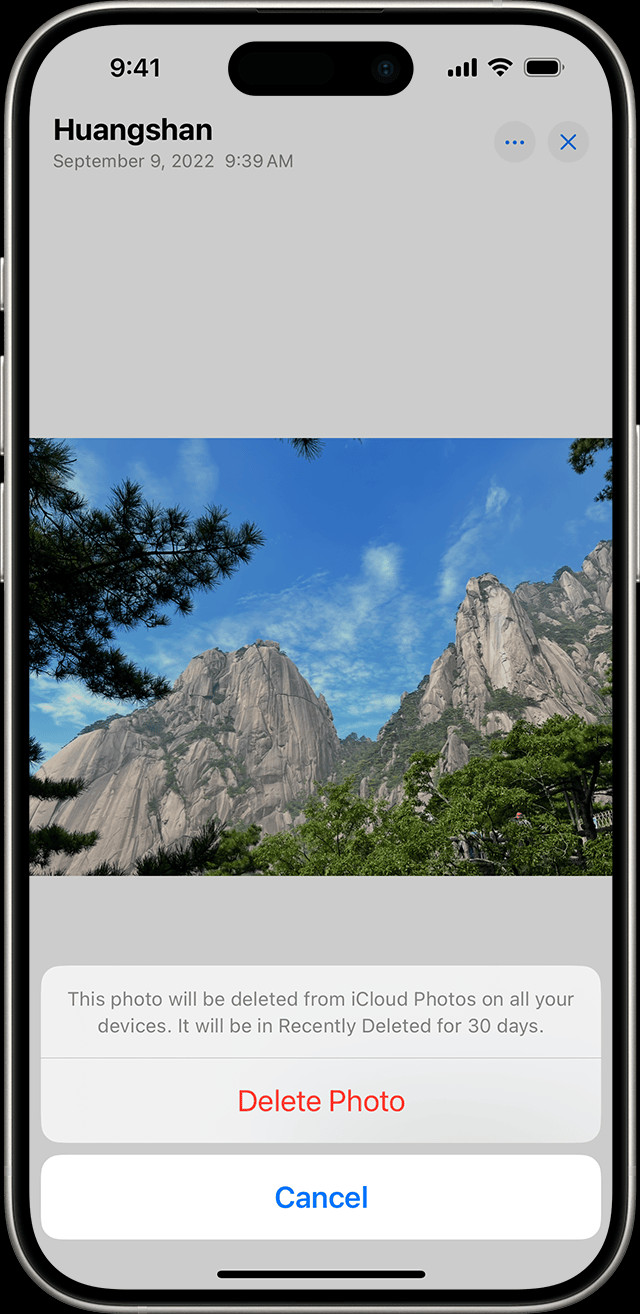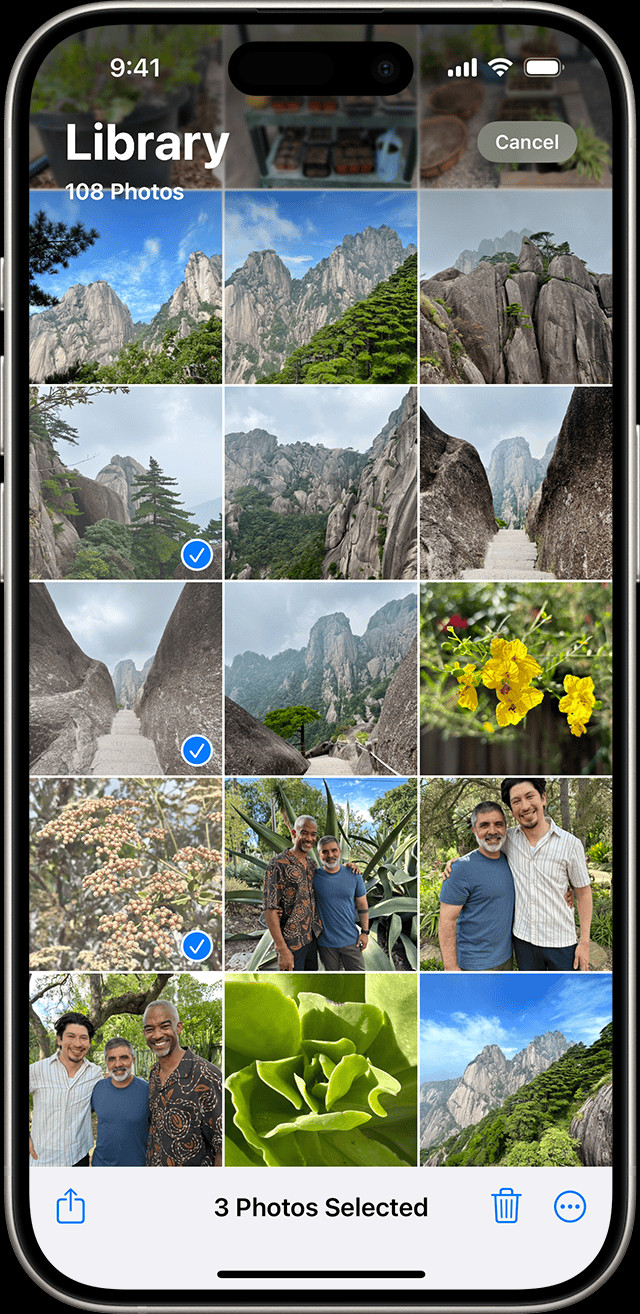Managing photos on your iPhone is crucial, especially if you’re an avid photographer or simply love capturing moments. Over time, these photos can accumulate, taking up valuable storage space. If you’re wondering, “how can I delete all photos from my iPhone?”, you’re in the right place. This guide will walk you through various methods to delete photos, whether you want to remove them individually, in bulk, or even permanently. We’ll also cover how to recover photos if you change your mind and ensure you understand how deleting photos works with iCloud.
Before we dive into the steps, it’s essential to understand what happens when you delete photos from your iPhone and how to manage your photos effectively.
Understanding Photo Deletion on iPhone
When you delete photos or videos from your iPhone, they aren’t immediately gone forever. Instead, they are moved to a “Recently Deleted” album. This acts as a safety net, giving you 30 days to recover them if you deleted something by mistake. After 30 days, these photos are permanently deleted from your device and iCloud if you are using iCloud Photos.
It’s also important to consider whether you are using iCloud Photos. If you are, deleting a photo on your iPhone will also delete it from all your other devices signed in with the same Apple ID. This can be incredibly convenient for syncing your photo library across devices, but it also means you need to be careful when deleting photos.
Before proceeding with deleting any photos, it’s always a good idea to back up any photos and videos you want to keep.
Backing Up Your Photos Before Deletion
Before you learn how to delete all photos from your iPhone, ensure you’ve backed up any precious memories you don’t want to lose forever. There are several ways to back up your photos:
- iCloud Photos: If you use iCloud Photos, your photos are automatically synced and backed up to iCloud. However, remember that deleting photos on your iPhone will also delete them from iCloud and other synced devices.
- Computer Backup: You can connect your iPhone to your computer and transfer photos to your hard drive. For Macs, you can use the Photos app or AirDrop. For Windows, you can use File Explorer.
- Third-Party Cloud Services: Services like Google Photos, Dropbox, or OneDrive offer photo backup and syncing options. These can be great alternatives or additional backups to iCloud.
Once you’ve secured your backups, you can confidently proceed with deleting photos from your iPhone.
How to Delete Photos from Your iPhone
There are multiple ways to delete photos from your iPhone, depending on whether you want to delete just a few or many at once.
Deleting a Single Photo or Video
If you need to remove just a few photos, here’s how to do it:
- Open the Photos app on your iPhone.
- Navigate to the photo you wish to delete, whether it’s in your Library, Albums, or any other folder.
- Tap on the photo to view it in full screen.
- Tap the Trash icon located at the bottom right corner of the screen.
- Confirm deletion by tapping “Delete Photo” in the popup menu.
 iPhone showing Delete Photo option
iPhone showing Delete Photo option
This image shows the process of deleting a single photo on an iPhone. The user is prompted to tap the trash icon after selecting a photo to initiate the deletion process.
Deleting Multiple Photos and Videos
To delete multiple photos at once, which is more efficient when you want to clear out a large number of images, follow these steps:
- Open the Photos app.
- Go to the album or date containing the photos you want to delete.
- Tap “Select” at the top right corner of the screen.
- Tap on each photo you want to delete. A checkmark will appear on each selected photo. Alternatively, you can slide your finger across multiple photos to select them quickly.
- Tap the Trash icon at the bottom right corner.
- Confirm deletion by tapping “Delete [Number] Photos/Videos”.
 iPhone showing multiple photos selected in the Photos app
iPhone showing multiple photos selected in the Photos app
This image illustrates how to delete multiple photos on an iPhone. It shows several photos selected with checkmarks, ready to be deleted in bulk.
Deleting All Photos: Is It Possible Directly?
While there isn’t a single button to “delete all photos” directly from the Photos app, you can efficiently select and delete large batches of photos. The most practical way to delete what effectively feels like all photos is by using the “Select” tool and selecting large portions of your library at a time.
You can speed up the process by scrolling to the bottom of your photo library after tapping “Select,” then dragging your finger upwards to select all photos quickly in large chunks. Repeat this process as needed to select and delete large numbers of photos.
Managing Photos Synced from Your Computer
If you’ve synced photos to your iPhone from your computer using iTunes or Finder, you might notice that the Trash icon is greyed out when you try to delete them. This is because these synced photos can only be managed (including deletion) from the computer they were synced from.
To remove these synced photos, you need to:
- Connect your iPhone to the computer you used to sync the photos.
- Open Finder on macOS Catalina or later, or iTunes on older macOS versions and Windows.
- Locate your iPhone in Finder or iTunes.
- Go to the Photos sync settings and deselect the option to sync photos.
- Choose to remove synced photos from your iPhone when prompted.
- Sync your iPhone to apply the changes.
After syncing, the photos synced from your computer will be removed from your iPhone.
Recovering Recently Deleted Photos
Accidentally deleted a photo? Don’t worry! You can recover photos from the “Recently Deleted” album within 30 days. Here’s how:
- Open the Photos app.
- Scroll down to the “Utilities” section and tap “Recently Deleted.”
- If you are using iOS 16, iPadOS 16.1, or later, you might need to unlock the “Recently Deleted” album using Face ID or Touch ID. Tap “View Album” and authenticate.
- Tap “Select” at the top right corner.
- Select the photos you want to recover.
- Tap “Recover” at the bottom right corner, then tap “Recover Photo” to confirm, or “Recover All” to restore all deleted photos.
This icon represents the “More” button often found in iOS interfaces, used to access additional options like recovering or permanently deleting photos.
The recovered photos will be restored to their original locations in your Photos library.
Permanently Deleting Photos from Your iPhone
If you want to permanently delete photos and free up storage space immediately, you don’t have to wait 30 days for the “Recently Deleted” album to clear automatically. You can manually empty the “Recently Deleted” album:
- Open the Photos app.
- Scroll down to “Utilities” and tap “Recently Deleted.”
- Unlock the album with Face ID or Touch ID if prompted.
- Tap “Select.”
- Select the photos you want to permanently delete, or choose “Delete All” to remove everything in the album.
- Tap “Delete”, then confirm “Delete Photo” or “Delete All” to permanently remove the selected photos.
Once you delete photos from the “Recently Deleted” album, they are gone for good and cannot be recovered.
Managing Duplicate Photos
iOS also offers a feature to help manage duplicate photos, which can save storage space and declutter your library.
- Open the Photos app.
- Scroll down to “Utilities” and look for the “Duplicates” album. This album appears if iOS detects duplicate photos.
- Tap “Duplicates.”
- Review the duplicates and tap “Merge” to combine them, or “Merge All” to merge all detected duplicates.
When you merge duplicates, iPhone keeps the highest quality version and moves the other duplicates to the “Recently Deleted” album, freeing up space and tidying up your library.
Conclusion
Knowing how to delete photos from your iPhone, whether individually, in bulk, or permanently, is essential for managing your device’s storage and privacy. By following these steps, you can efficiently clear out unwanted photos and keep your photo library organized. Remember to back up your important photos before deleting, and utilize the “Recently Deleted” album as a safety net. With these tips, you can confidently manage your iPhone photos and keep your device running smoothly.
